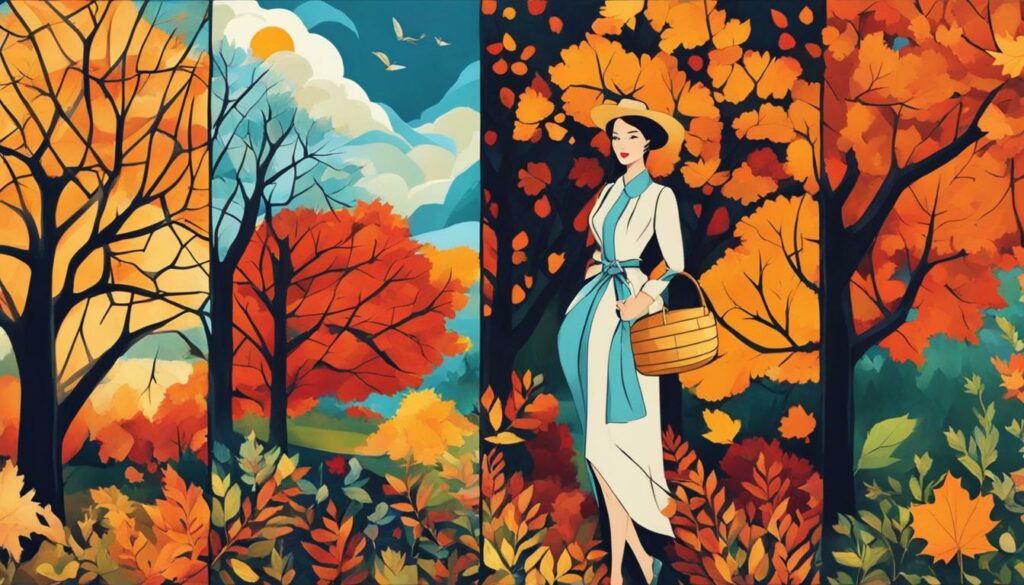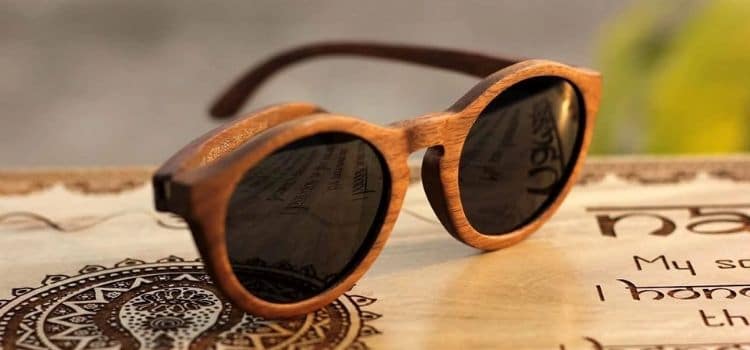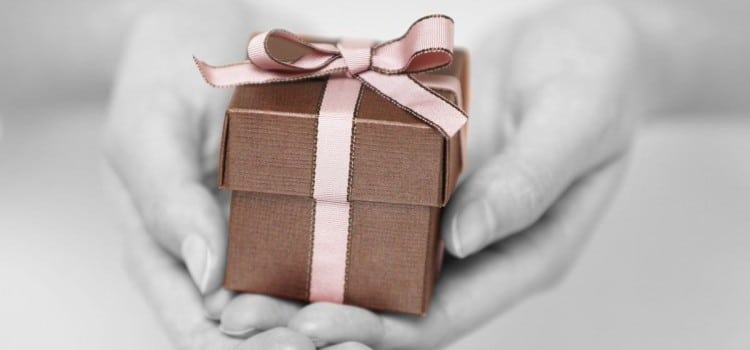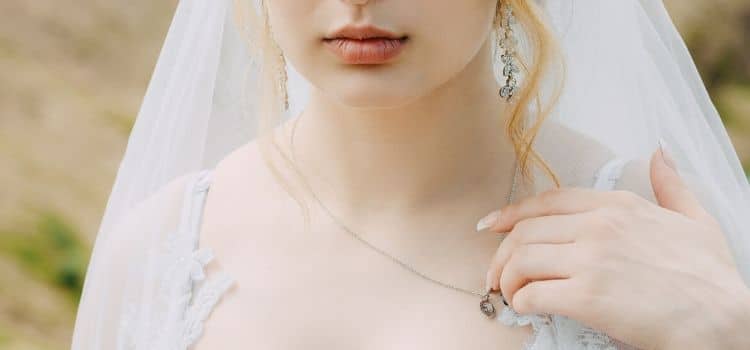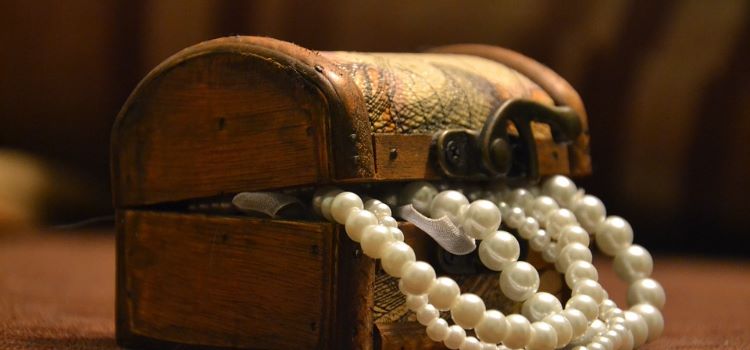Welcome to my fashionable journey as we delve into the intriguing world of the fashion cycle. In this article, we will explore the captivating dynamics of fashion trends, the ever-evolving fashion industry, and the lifecycle of styles that shape our wardrobes. Get ready to discover the fascinating seasons of fashion and how they influence our personal style.
From the runway to our closets, the fashion cycle takes us on a stylish adventure where trends come and go, reflecting the zeitgeist of our times. Join me as we unravel the secrets behind the rise and fall of fashion trends, understand the stages of their journey, and explore the influences that shape our sartorial choices.
Throughout this series, we will discuss the introduction stage, where new trends make their debut, capturing the attention of major brands and designers during prestigious Fashion Weeks. We will also explore the rise stage, when these trends gain popularity among consumers, propelled by the influence of celebrities, influencers, and fashion shows.
As we journey further, we will delve into the peak stage of the fashion cycle, where trends reach their pinnacle of mainstream popularity. Here, major retailers embrace the craze, while luxury brands may discontinue their production. Brace yourself for the decline stage, when trends start losing their allure as market saturation and consumer fatigue set in. During this stage, retailers may offer discounted prices to make room for new fashion endeavors.
Finally, we will explore the obsolescence stage, where trends are considered “out of fashion” by the majority. However, don’t be surprised if some trends make a comeback after a period of absence, revamped with a modern twist. The fashion cycle is a perpetual cycle of innovation and reinvention.
Join me as we unravel the mysteries of fashion cycle lengths and patterns, understand the different types of fashion adopters, and explore the role of fashion designers in shaping trends. We will also delve into the fashion calendar, the impact of design copying, the significance of trend forecasting, and so much more.
So, fasten your seatbelts, fashion enthusiasts, as we embark on this stylish journey together. Let’s dive into the captivating world of the fashion cycle and discover the magic behind the ever-evolving trends that define our personal fashion statements.
The Introduction Stage of the Fashion Cycle
When it comes to the fashion cycle, the introduction stage marks the exciting beginning of a new trend. This stage is often initiated by major brands and designers, who showcase their innovative creations during events like Fashion Week. At this stage, trends can be new styles, colors, patterns, or fabrics that captivate the fashion world.
The introduction stage is characterized by limited visibility, with the trend primarily embraced by high-fashion enthusiasts and trend-forward consumers. The cutting-edge designs embodied by major brands and designers set the stage for the trend’s potential rise to popularity.
During this stage, the fashion world eagerly awaits the unveiling of new trends. Fashion enthusiasts and industry insiders closely observe the runway shows and events, anticipating the next big thing in fashion. The introduction stage serves as a powerful catalyst that sets the fashion cycle in motion.
The Influence of Major Brands and Designers
Major brands and designers play a pivotal role in shaping the fashion landscape. Their creative vision and ability to anticipate consumer desires allow them to introduce trends that capture the attention of fashion-forward individuals. By showcasing their creations during Fashion Week and other prominent events, they provide a platform for trends to gain recognition and momentum.
“The introduction stage is an exciting time for the fashion industry, as it is the first glimpse of what’s to come. Major brands and designers set the tone for the next season’s trends, influencing consumer preferences and shaping the fashion cycle.”
– Fashion industry expert
The Rise Stage of the Fashion Cycle
In the rise stage of the fashion cycle, a trend that was initially introduced starts gaining popularity among consumers. This is the stage where the trend begins to be seen on celebrities, influencers, and fashion shows, further fueling its popularity. The rise stage is an exciting time for a trend as it transitions from a niche style to a more widely accepted fashion choice.
Celebrities and influencers play a significant role in driving the popularity of a trend during the rise stage. Their endorsement and personal style choices can make a trend go viral, reaching a broader audience. Fashion shows also contribute to the rise of a trend, as designers showcase their collections and incorporate the trend into their designs.
With the growing popularity of a trend, more retailers start carrying it, making it more accessible to consumers. Fast-fashion brands also play a role in the rise stage by creating affordable versions of the trend, allowing a wider range of consumers to participate in the trend. The rise stage is an exciting and crucial time for a trend as it establishes itself as a mainstream fashion choice.
Celebrities, influencers, and fashion shows drive trend popularity:
| Celebrities | Influencers | Fashion Shows |
|---|---|---|
| Celebrities showcase the trend in their personal style choices | Influencers promote the trend through their social media platforms | Designers feature the trend in their collections |
| Celebrity endorsement increases trend visibility | Influencer marketing spreads awareness about the trend | Fashion shows create buzz around the trend |
| Celebrity red carpet appearances influence consumer perception | Influencers provide style inspiration and trend guidance | Fashion shows set the tone for future trend adoption |
The rise stage of the fashion cycle sets the foundation for a trend’s mainstream popularity. It is a time when consumers start embracing the trend, retailers stock up on it, and fast-fashion brands make it accessible to a wider audience. The role of celebrities, influencers, and fashion shows cannot be underestimated, as they drive the trend’s popularity and ensure its widespread acceptance in the fashion industry.
The Peak Stage of the Fashion Cycle
At the peak stage of the fashion cycle, a trend reaches its maximum level of mainstream popularity. This is when the trend is embraced by major retailers and becomes widely available to consumers. Luxury brands often play a significant role in elevating a trend to its peak, but once it reaches this stage, they may cease production, making the trend more exclusive and desirable.
During the peak stage, major retailers carry the trend, catering to the high demand from fashion-conscious consumers. It becomes a staple in fashion collections and is featured prominently in advertising campaigns. The trend captures the attention of the masses and becomes a symbol of current style and status.
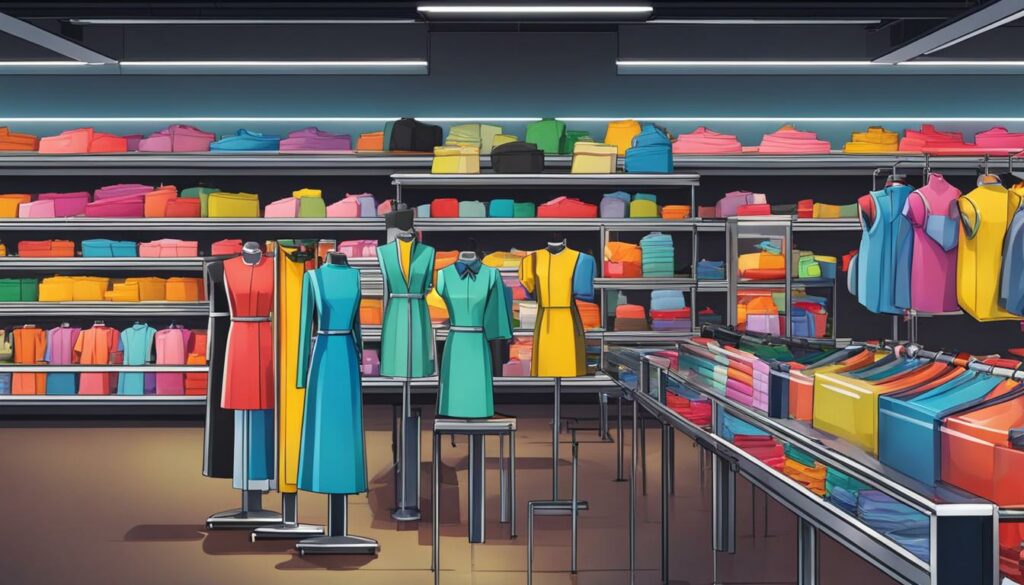
The Role of Major Retailers and Luxury Brands:
Major retailers are crucial in popularizing a trend during the peak stage. Their extensive distribution networks allow the trend to reach a wider consumer base. These retailers have the infrastructure and marketing power to showcase the trend, influencing consumers’ purchasing decisions. Luxury brands also play a significant role in defining and propelling a trend. Their endorsement adds prestige and authenticity to the trend, making it aspirational for consumers.
The peak stage can vary in duration, depending on the trend’s staying power and ongoing market demand. Some trends only remain at their peak for a single season, while others may have a longer shelf life and retain popularity for multiple seasons. The unpredictable nature of the fashion cycle adds excitement and anticipation for both consumers and industry insiders.
Table: Examples of Trends at the Peak Stage
| Trend | Key Features | Mainstream Popularity | Major Retailers | Luxury Brands |
|---|---|---|---|---|
| Animal Print | Leopard, zebra, snake patterns | Widely embraced | Fast-fashion brands, department stores | Gucci, Dolce & Gabbana |
| Neon Colors | Bright and vibrant hues | Trendy and eye-catching | High-street retailers, online fashion platforms | Balenciaga, Versace |
| Chunky Sneakers | Oversized and exaggerated soles | Mass appeal | Sportswear brands, streetwear retailers | Balenciaga, Alexander McQueen |
The table above illustrates examples of trends at the peak stage, showcasing their key features, mainstream popularity, and the involvement of major retailers and luxury brands. These trends have experienced a high level of demand and have become iconic symbols of their respective periods.
The Decline Stage of the Fashion Cycle
In the decline stage of the fashion cycle, trends start losing their popularity due to market oversaturation and consumer fatigue. This stage signifies a shift in consumer preferences and paves the way for new trends to emerge. As the market becomes flooded with similar styles and designs, consumers may grow tired of the trend and seek something new and fresh to wear.
During the decline stage, luxury brands typically stop carrying the trend, as it loses its appeal among their target clientele. Retailers, on the other hand, may start selling the trend at discounted prices in an effort to clear inventory and make room for new merchandise. This can be an opportunity for budget-conscious consumers to purchase trendy items at lower prices.
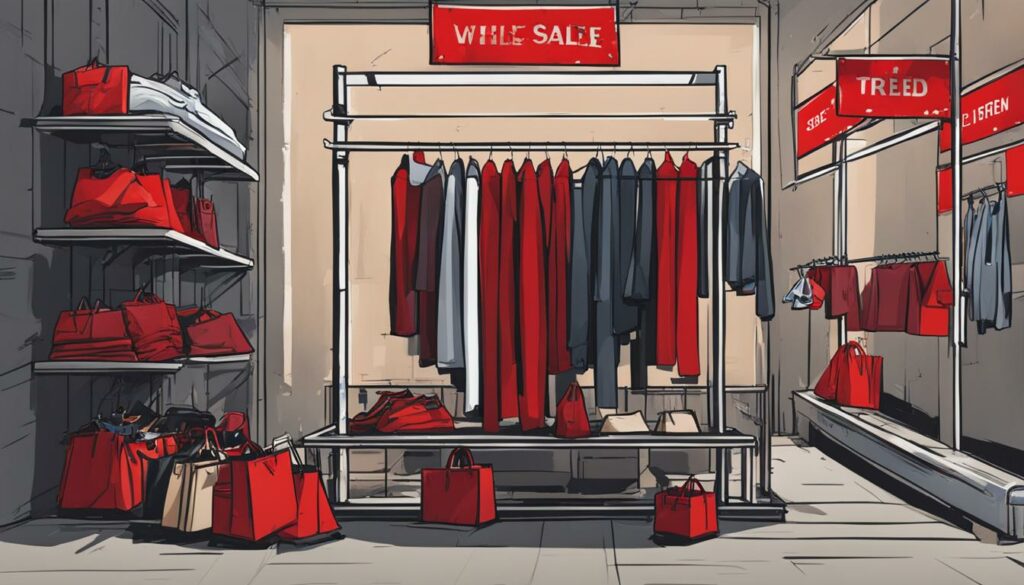
While some trends may completely disappear during the decline stage, others may continue to have a niche following or experience a revival in the future. Fashion is cyclical, and past trends often make a comeback with a modern twist. Designers may revamp and reintroduce once-popular styles, catering to the ever-changing preferences of consumers.
In summary, the decline stage of the fashion cycle is characterized by market oversaturation, consumer fatigue, and discounted prices. It marks the end of a trend’s peak popularity and prepares the industry for the next wave of fashion innovation. As trends come and go, the fashion industry continues to evolve, offering consumers a diverse range of styles to choose from.
The Obsolescence Stage of the Fashion Cycle
In the ever-changing world of fashion, trends can quickly go from being the latest must-have to out of fashion. This is when a trend enters the obsolescence stage of the fashion cycle. During this stage, consumer behavior and market forces contribute to the decline and eventual disappearance of a trend.
Consumers play a crucial role in determining the lifespan of a trend. As trends become overexposed and lose their novelty, consumer interest and desire for the trend diminish. Fashion-savvy individuals move on to new styles, making the previous trend seem outdated and irrelevant.
However, just because a trend is considered out of fashion doesn’t mean it is gone forever. Revamping trends is a common practice in the fashion industry. Designers often revisit past trends, adding a modern twist to make them relevant again. This allows fashion brands to tap into nostalgia and cater to consumers’ desire for familiar yet updated styles.
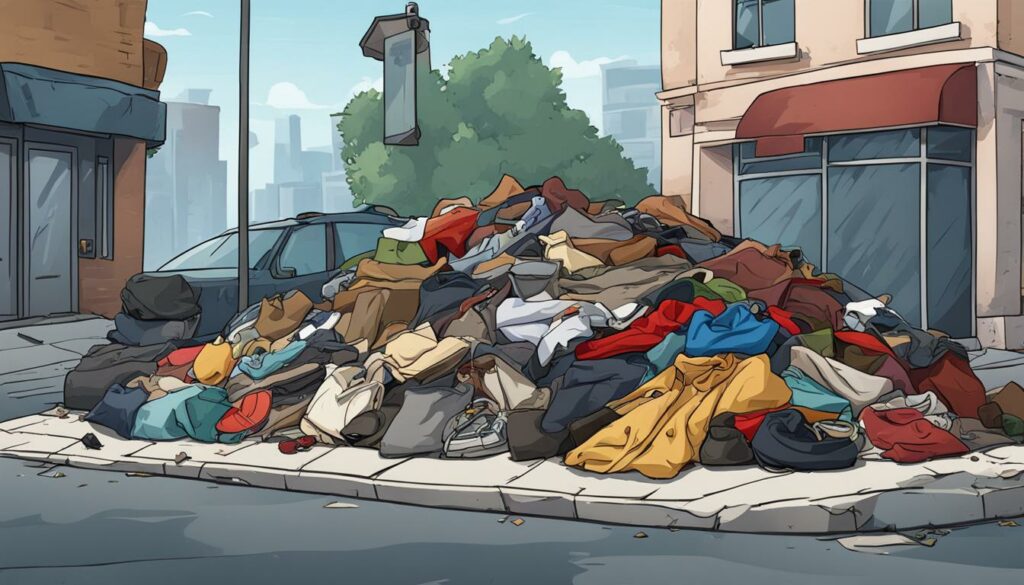
The obsolescence stage of the fashion cycle serves as a reset for the industry. It paves the way for the emergence of new trends and provides opportunities for designers and brands to innovate. As consumer preferences and tastes evolve, the fashion cycle continues its perpetual journey of style evolution and reinvention.
Fashion Cycle Lengths and Patterns
As trends come and go in the fashion industry, it’s important to understand the varying lengths and patterns of the fashion cycle. Some trends have a long-run fashion lifecycle, maintaining popularity for an extended period, while others have a short-run fashion cycle, fading out quickly. Additionally, certain trends exhibit cycles within cycles, where specific design elements evolve while the overall style remains popular. This understanding helps fashion brands make strategic decisions and adapt to changing consumer preferences.
Long-run fashion trends are those that remain popular for an extended period, often spanning multiple seasons or even years. These trends capture the hearts of consumers and become timeless classics. For example, the little black dress, introduced by Coco Chanel in the 1920s, remains a staple in many women’s wardrobes today. These long-run fashion trends often have staying power due to their versatility, timeless appeal, and ability to adapt to changing fashion trends.
On the other hand, short-run fashion trends have a more fleeting presence in the fashion cycle. They experience a surge in popularity but quickly lose momentum. These trends are often influenced by factors such as celebrity endorsements, social media, or cultural events. Fast-fashion brands are known for their ability to quickly produce and replicate short-run fashion trends, making them accessible to a wide consumer base at affordable prices.
Within the fashion cycle, some trends exhibit cycles within cycles. This means that while the overall style remains popular, specific design elements evolve over time. For example, the floral print trend may experience variations in color, scale, and pattern in each cycle, while still maintaining its overall popularity. Understanding these cycles within cycles allows fashion brands to adapt and innovate, keeping their designs fresh and appealing to consumers.
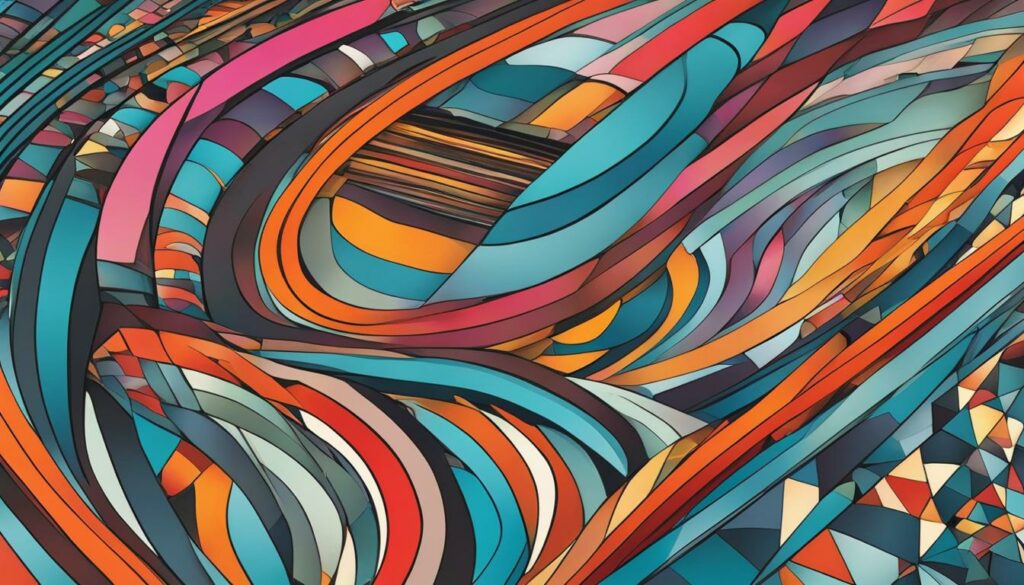
| Trend Type | Characteristics | Examples |
|---|---|---|
| Long-run fashion | Remains popular for an extended period | The little black dress, denim jeans |
| Short-run fashion | Fades out quickly after a surge in popularity | Festival fashion, neon colors |
| Cycles within cycles | Specific design elements evolve while overall style remains popular | Floral prints with changing patterns and colors |
Fashion Cycle: Understanding Consumer Adopters
In the fashion cycle, different types of consumers play a crucial role in the adoption and popularity of trends. By understanding the behavior and preferences of fashion adopters, brands can tailor their strategies to reach their target audience effectively.
Innovators and Trendsetters
At the forefront of fashion adoption are the innovators. These trendsetters are the first to embrace new styles, often seeking to stand out and make a bold statement. They are influential individuals who set the stage for the rise of a trend. Innovators are admired and often followed by other fashion-conscious individuals who look to them for inspiration.
Early Majority and Late Majority
The early majority represents a larger group of consumers who adopt trends once they have gained traction and become more widely accepted. They value social proof and are influenced by the choices of innovators and trendsetters. On the other hand, the late majority are more cautious and tend to adopt trends later in the cycle, relying on the widespread acceptance and availability of the trend before embracing it themselves.
Laggers: Slow to Adopt
Laggers are the consumers who are slow to adopt new fashion trends. They may have reservations about change and prefer to stick to traditional or classic styles. Laggers are typically the last to embrace a trend and may only do so when it has become mainstream or socially expected.
Understanding the different types of fashion adopters allows brands to tailor their marketing strategies accordingly. By targeting innovators and trendsetters, brands can create buzz and gain initial traction for a new trend. Likewise, targeting the early and late majority ensures wider adoption and market success. While laggers may be a smaller market segment, they can still contribute to the overall success of a trend. By appealing to their preferences and addressing their concerns, brands can extend the lifespan of a trend.
| Type of Fashion Adopter | Description |
|---|---|
| Innovators | The first to embrace new styles and set trends |
| Trendsetters | Influential individuals who follow innovators and inspire others |
| Early Majority | Adopt trends once they have gained traction |
| Late Majority | Adopt trends after they have become widely accepted |
| Laggers | Slow to adopt new trends, preferring traditional styles |
The Fashion Calendar: A Year in the Fashion Industry
Being a part of the fashion industry means living according to the rhythm of the fashion calendar. Throughout the year, various events take place that shape the trends and strategies of the industry. From fashion month to market appointments, these activities are pivotal in setting the course for the seasons to come.
One of the key highlights of the fashion calendar is fashion month, which occurs twice a year in major fashion capitals like New York, Milan, London, and Paris. During these months, top designers showcase their collections on the runway, setting the tone for the upcoming seasons. Fashion shows become the epicenter of creativity and innovation, inspiring designers, buyers, and fashion enthusiasts alike.
Market appointments are another crucial aspect of the fashion calendar. These appointments allow designers to present their collections to buyers and retailers, creating opportunities for collaborations and partnerships. It is during these appointments that business decisions are made, as retailers carefully curate their assortments and make strategic purchases for the upcoming seasons.
Strategy meetings form an integral part of the fashion calendar as well. Brands and designers gather to discuss their marketing strategies, analyze consumer trends, and plan their collections. These meetings involve cross-functional teams, including designers, merchandisers, marketers, and executives, working together to align their vision and maximize success in the competitive fashion industry.
| Fashion Month | Market Appointments | Strategy Meetings |
|---|---|---|
| Twice a year | Throughout the year | Year-round |
| Dazzling runway shows | Presenting collections to buyers | Planning marketing strategies |
| Inspiration for designers and fashion enthusiasts | Opportunities for collaborations | Aligning vision and maximizing success |
As each month unfolds, the fashion industry buzzes with activity, ranging from trend forecasting to buyer appointments. The fashion calendar serves as a guide, shaping the direction of the industry and providing structure to the creative process. By understanding and embracing the fashion calendar, fashion professionals can navigate the ever-changing landscape of trends and consumer preferences.
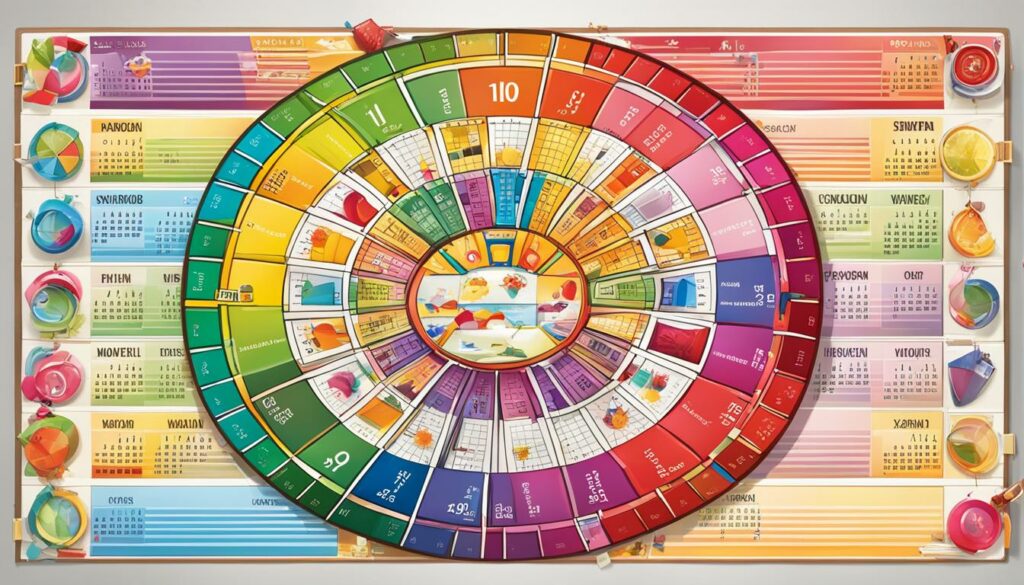
The Role of Fashion Designers in Creating Trends
Fashion designers are the creative minds behind the trends that dominate the industry. They have the ability to transform their ideas and inspirations into visually appealing garments that capture the imagination of consumers. Through their innovative designs, fashion designers shape the trends that define each season and create a lasting impact on the fashion industry.
The process of creating a trend starts with the designer’s vision and imagination. They draw inspiration from various sources, such as art, culture, nature, and current events. This allows them to create unique and original designs that reflect the current zeitgeist and capture the attention of fashion enthusiasts.
Garment design is a complex process that involves a combination of technical skills and artistic flair. Fashion designers have to consider various factors, such as fabric selection, color palettes, silhouettes, and embellishments, to bring their designs to life. They work closely with pattern makers, sample makers, and manufacturers to ensure that their designs are translated into wearable garments that meet industry standards and consumer expectations. With their attention to detail and craftsmanship, fashion designers bring their creative visions to reality.
In the words of a fashion designer:
“Fashion design is not just about creating beautiful clothes. It’s about expressing ideas, pushing boundaries, and evoking emotions through garments. It’s a journey of self-expression and storytelling, where each design tells a unique narrative.”
| Design Process | Key Steps |
|---|---|
| Research and Inspiration | Gathering ideas, exploring trends, and identifying sources of inspiration. |
| Sketching and Concept Development | Translating ideas into visual representations through sketches and concept boards. |
| Pattern Making and Prototyping | Crafting patterns and creating sample garments to test the design and fit. |
| Fabric Selection and Finalization | Choosing fabrics and materials that complement the design and enhance its aesthetics. |
| Garment Production | Collaborating with manufacturers to produce the final garments for retail or runway. |
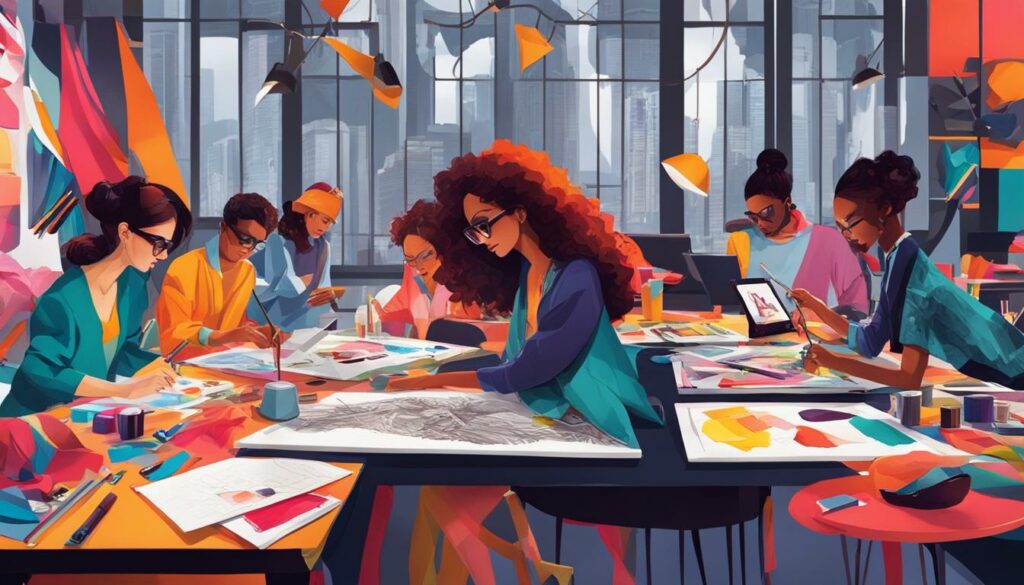
Fashion designers have a significant influence on the trends that shape the fashion cycle. Their creative vision and ability to bring innovative designs to life set the direction for the industry. By pushing boundaries and challenging conventions, they inspire fashion enthusiasts and fuel the evolution of the fashion industry.
The Five Stages of the Fashion Cycle
Introduction
The fashion cycle consists of five stages that define the life of a trend from its inception to its eventual decline. These stages are introduction, rise, peak, decline, and obsolescence. Understanding the progression of these stages is crucial for fashion brands to navigate the ever-changing industry and make informed decisions.
Rise
In the rise stage, a trend starts gaining popularity among consumers. This is when the trend begins to catch the attention of celebrities, influencers, and the general public. Fashion shows, media coverage, and endorsements play a significant role in amplifying the visibility of the trend. Retailers start carrying the trend, and fast-fashion brands create affordable versions to cater to the growing demand.
Peak
At the peak stage, a trend reaches its highest level of popularity among mainstream consumers. It becomes widely embraced and can be seen across different retail outlets. Major retailers stock the trend, while luxury brands often phase it out, creating a sense of exclusivity. The length of the peak stage varies for each trend, depending on factors like consumer preferences and market saturation.
Decline and Obsolescence
In the decline stage, a trend starts losing its popularity. Market oversaturation, consumer fatigue, and the emergence of new trends contribute to the decline. Luxury brands typically stop carrying the trend, and retailers offer discounts to clear inventory. Eventually, the trend enters the obsolescence stage, considered “out of fashion” by the majority of consumers. However, some trends may resurface in the future with a fresh twist.
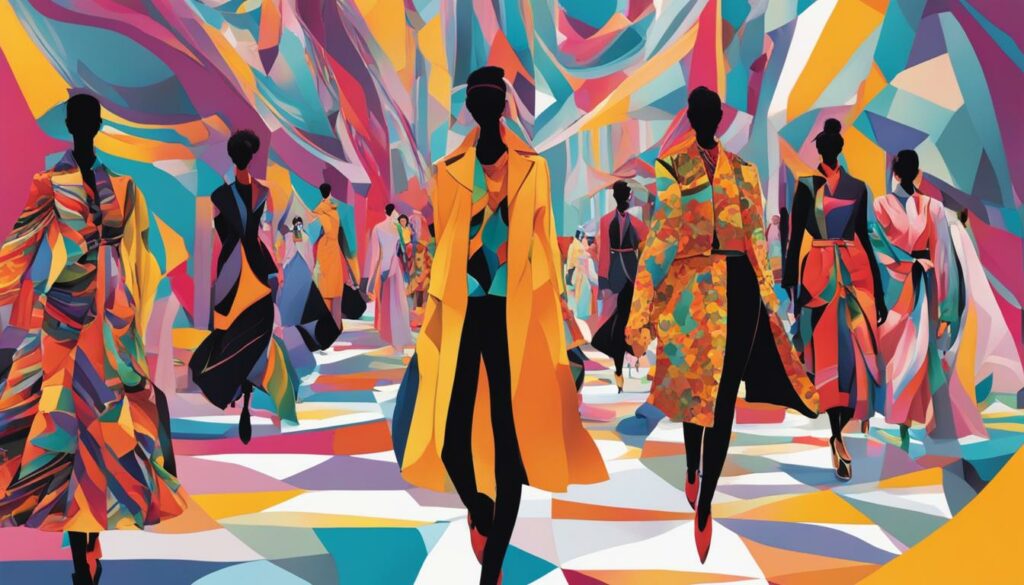
| Stage | Description |
|---|---|
| Introduction | The stage when a new trend is first introduced to the market through major brands and designers during events like Fashion Week. |
| Rise | The stage when a trend gains popularity among consumers due to endorsements, media coverage, and increased availability. |
| Peak | The stage when a trend reaches its highest level of popularity among mainstream consumers and becomes widely embraced. |
| Decline | The stage when a trend starts losing its popularity due to market oversaturation, consumer fatigue, and the emergence of new trends. |
| Obsolescence | The stage when a trend is considered “out of fashion” by the majority of consumers and is no longer widely embraced. |
Fashion Cycle Lengths and Patterns
Within the fashion cycle, trends can exhibit different lengths and patterns. Some trends are short-lived, experiencing a quick rise and fall, while others become timeless classics that endure over time. Additionally, there are trends that fail to gain acceptance and are considered flops, as well as fads that garner brief but intense popularity.
In the fashion industry, we often observe a cycle within cycles. This means that while certain design elements or details may change and evolve, the overall style remains popular. This phenomenon allows trends to be reinvented and reintroduced, giving them a fresh twist and extending their lifespan.
Understanding the various lengths and patterns within the fashion cycle is vital for fashion brands and designers. It helps them anticipate the trajectory of a trend and make informed decisions about their collections. By recognizing trends as flops, fads, classics, or part of a cycle within cycles, fashion professionals can strategically plan their offerings and stay ahead in this ever-changing industry.
In Summary:
- Trends within the fashion cycle can have different lengths and patterns.
- Some trends are short-lived, while others become timeless classics.
- Flops refer to trends that fail to gain acceptance, while fads experience brief but intense popularity.
- There are also trends that follow a cycle within cycles, allowing for reinvention and longevity.
| Trend | Length | Pattern |
|---|---|---|
| Classic | Long-lasting | Stable |
| Flop | Short-lived | Rapid decline |
| Fad | Short-lived | Quick rise and fall |
| Cycle within cycles | Varies | Design elements change, overall style remains popular |
The Influence of Fashion Consumers
Understanding consumer preferences and their impact on the fashion cycle is crucial for fashion brands. Consumer acceptance and trend adoption play a significant role in determining the success of a fashion style. It is the consumers who ultimately decide which trends become popular and which fall out of favor. By closely studying consumer behavior and preferences, fashion brands can tailor their strategies to meet the demands of their target audience.
Consumer Preferences
Consumer preferences are unique to each individual, influenced by factors such as personal style, cultural background, lifestyle, and values. What one person finds fashionable may not resonate with others. It is important for fashion brands to conduct market research and analyze consumer data to understand the preferences and desires of their target market. By gaining insights into consumer preferences, brands can create products that align with their customers’ tastes, increasing the chances of trend acceptance and adoption.
Fashion Acceptance and Trend Adoption
Fashion acceptance refers to the willingness of consumers to embrace new styles and trends. Some trends are quickly embraced, becoming widely popular, while others may face resistance or take longer to gain acceptance. This acceptance is influenced by various factors, including media representation, celebrity endorsement, and social influencers. When a trend is widely accepted, it enters the rise and peak stages of the fashion cycle, gaining popularity and becoming mainstream.
Trend adoption is the process by which consumers incorporate new fashion styles into their wardrobes and personal style. Innovators and trendsetters are the first to adopt new trends, followed by the early majority, late majority, and laggers. Innovators and trendsetters play a crucial role in setting the stage for trend acceptance and adoption. Their influence and endorsement of a trend often determine its success in the fashion market.
The Impact of Design Copying in the Fashion Cycle
Design copying is a prevalent practice in the fashion industry, where bridge and fast-fashion brands imitate high-fashion designs. This phenomenon plays a significant role in shaping the availability and accessibility of trends. By replicating high-fashion designs at lower price points, bridge and fast-fashion brands allow trends to reach a wider consumer base.
Bridge brands act as a link between high-end luxury fashion and mass-market retail. They create designs that are more affordable than high-fashion counterparts but still carry elements of luxury and exclusivity. These brands often draw inspiration from high-fashion designs and adapt them to fit the needs and preferences of a broader consumer audience.
Fast-fashion brands, on the other hand, focus on quickly producing affordable versions of popular trends. They closely monitor high-fashion runways and swiftly replicate designs to deliver the latest styles to consumers at an affordable price. Fast-fashion brands play a significant role in making fashion trends accessible to a large consumer base, allowing individuals to stay up-to-date with the latest styles without breaking the bank.
The Influence of Design Copying on the Fashion Industry
The practice of design copying has both positive and negative effects on the fashion industry. On one hand, it allows individuals from various socioeconomic backgrounds to participate in and enjoy fashion trends. It democratizes fashion by making it more inclusive and accessible.
“Design copying allows individuals to express their personal style and experiment with different trends without the hefty price tag associated with high-end luxury fashion.”
On the other hand, design copying raises concerns about intellectual property rights and the originality of designs. High-fashion designers invest time, effort, and creativity into their collections, and seeing their designs replicated by other brands can be disheartening. It also raises questions about the sustainability and ethics of fast-fashion production, as the emphasis on quick replication can contribute to environmental and labor issues.
In conclusion, design copying has a significant impact on the fashion cycle, shaping the availability and accessibility of trends. While it allows a wider consumer base to participate in fashion, it also raises concerns about originality and sustainability within the industry. As the fashion industry continues to evolve, finding a balance between innovation, accessibility, and ethical practices will be crucial.
The Role of Trend Forecasting in the Fashion Cycle
Trend forecasting is a crucial aspect of the fashion industry, providing valuable insights into the future popularity of trends. By analyzing data and consumer behaviors, trend forecasters help fashion brands make informed decisions when planning their collections. The process involves a combination of data analysis, market research, and creative interpretation to identify emerging trends and determine their potential impact.
Through trend forecasting, fashion brands can anticipate consumer demands and stay ahead of the competition. By understanding which trends are likely to gain traction, brands can strategically plan their collection designs, colors, and styles. This enables them to cater to the preferences of their target market and increase the chances of their products becoming successful.
Trend forecasting also assists in collection planning by providing insights into the overall direction of the fashion industry. It helps brands identify the key themes, silhouettes, and materials that will be popular in the upcoming seasons. This information allows designers and merchandisers to align their collections with current and future trends, ensuring that their offerings resonate with consumers.
| Trend Forecasting Benefits: | Trend Forecasting Process: |
|---|---|
|
|
“Trend forecasting provides valuable insights into consumer preferences and market trends, helping fashion brands make informed decisions when planning their collections.”
– Fashion Industry Expert
In conclusion, trend forecasting plays a vital role in the fashion cycle by providing crucial insights into the future popularity of trends. Through data analysis and market research, trend forecasters help fashion brands anticipate consumer demands and strategically plan their collections. By aligning their offerings with current and future trends, brands can increase their chances of success in the competitive fashion industry.
Conclusion
As we conclude our exploration of the fashion cycle, we can see that the fashion industry is constantly evolving. Trends rise and fall, driven by consumer preferences, design copying, and trend forecasting. It is a dynamic process that keeps fashion brands on their toes, adapting to changing consumer behaviors and technological advancements.
Understanding the fashion cycle is imperative for fashion brands to stay relevant and successful. It allows them to navigate the industry and create collections that resonate with consumers. By analyzing the stages of the fashion cycle – from introduction to obsolescence – brands can make informed decisions about which trends to embrace and which to let go.
The fashion industry’s evolution is undeniable. With the rise of social media and technological advancements, trends no longer conform to a strict 20-year cycle. Instead, they can spread rapidly and gain popularity in a matter of weeks. This accelerated pace challenges fashion brands to stay ahead of the curve and constantly provide fresh and exciting designs to capture consumers’ attention.
As we move forward, the fashion cycle will continue to shape the industry. The interplay between consumer acceptance, design copying, and trend forecasting will influence the availability and accessibility of trends. Fashion brands must adapt to these dynamics, staying innovative and in tune with consumer preferences. The future of the fashion industry is vibrant and ever-changing, inviting new possibilities and exciting developments.
FAQ
What are the stages of the fashion cycle?
The stages of the fashion cycle are introduction, rise, peak, decline, and obsolescence.
How does the introduction stage of the fashion cycle work?
The introduction stage is when a new trend is first introduced to the market by major brands and designers during Fashion Week.
What happens during the rise stage of the fashion cycle?
The rise stage is when a trend starts gaining popularity among consumers, often due to the influence of celebrities, influencers, and fashion shows.
What characterizes the peak stage of the fashion cycle?
The peak stage is when a trend reaches its highest level of popularity among mainstream consumers and is carried by major retailers.
How does the decline stage of the fashion cycle occur?
The decline stage occurs when a trend starts losing its popularity due to market oversaturation and consumer fatigue.
What happens during the obsolescence stage of the fashion cycle?
The obsolescence stage occurs when a trend is widely considered “out of fashion” and is phased out by retailers. However, past trends can make a comeback with a modern twist.
How long can fashion cycles last?
Fashion cycles can vary in length, with some trends remaining popular for an extended period, while others fade out quickly.
Who are the different types of consumer adopters in the fashion cycle?
The different types of consumer adopters are innovators, trendsetters, early majority, late majority, and laggers.
What is the fashion calendar?
The fashion calendar includes Fashion Month, which occurs twice a year and consists of pre-market appointments, fashion shows, market appointments, and strategy meetings.
What is the role of fashion designers in creating trends?
Fashion designers use their creativity and imagination to design attractive garments, some of which become popular trends.
How do fashion trends evolve within the fashion cycle?
Fashion trends can have different lengths and patterns, with some trends being short-lived, others becoming classics, and some having cycles within cycles.
What influences the fashion cycle?
The fashion cycle is influenced by consumer preferences, design copying, and trend forecasting.
What is the impact of design copying in the fashion cycle?
Design copying allows trends to reach a wider consumer base at lower price points, and high-fashion designers often create diffusion lines to compete with mass-market brands.
What is the role of trend forecasting in the fashion cycle?
Trend forecasting helps fashion brands plan their collections and make informed decisions by analyzing data and consumer behaviors to predict the future popularity of trends.
How does the fashion industry continue to evolve?
The fashion industry continues to evolve with technological advancements and changing consumer behaviors.
Source Links
- https://thestylethatbindsus.com/2016-10-16-fashion-cycle-unmasked/
- https://www.heuritech.com/articles/five-stages-of-fashion-trend-life-cycle/
- https://wifd.in/fashion_cycle_life_span_and_adopters
